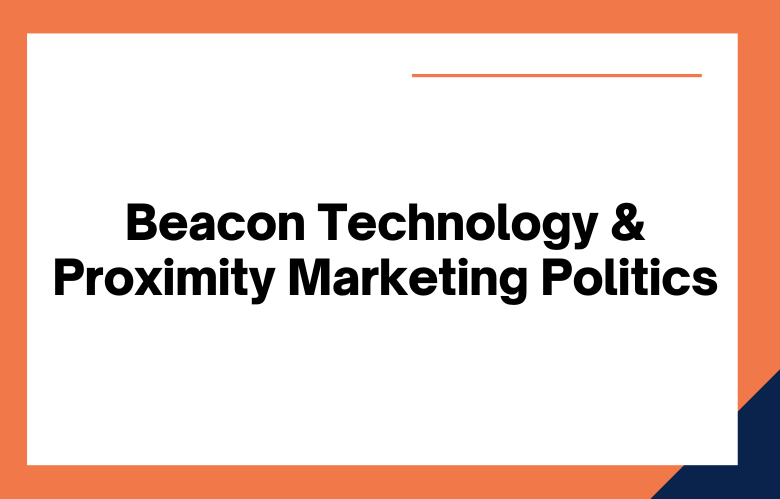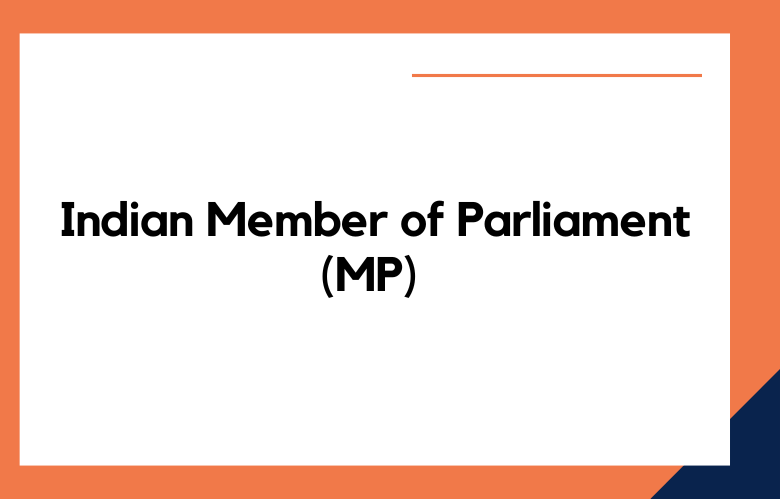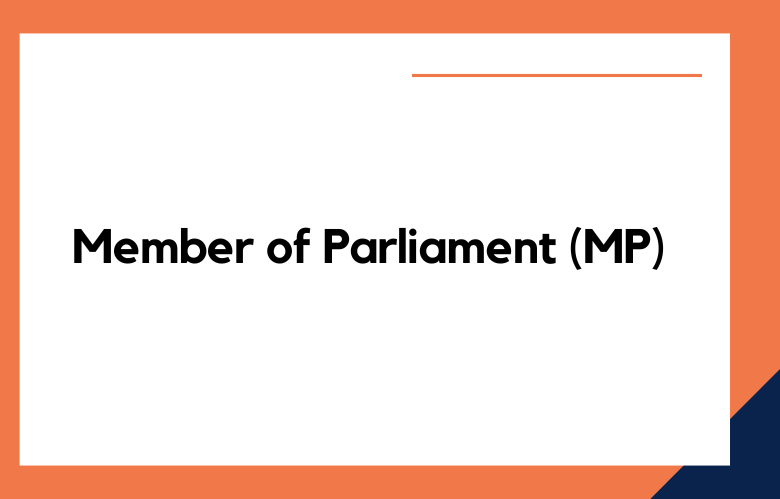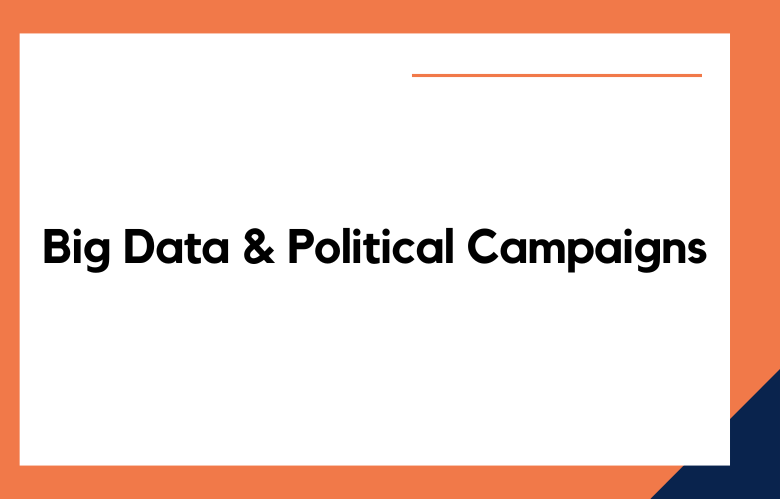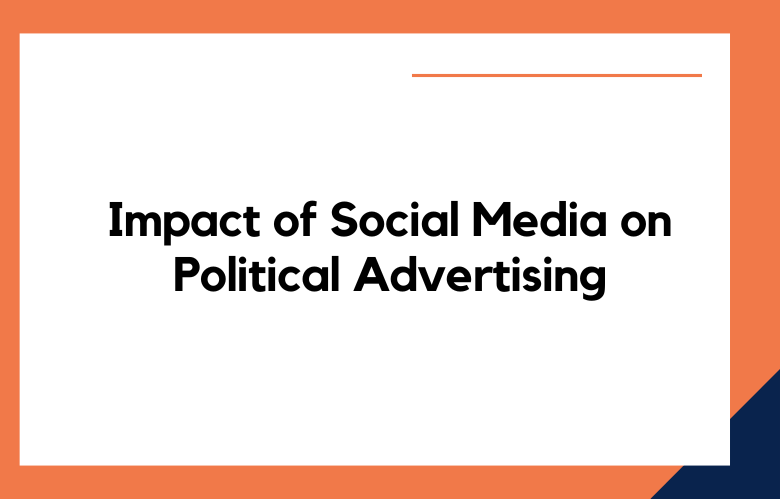Political campaigns have become increasingly sophisticated in utilizing technology to win over voters. Advances in digital marketing have enabled campaigns to reach large audiences more effectively. Beacons have become a valuable tool for political campaigns to engage with voters through proximity marketing.
Let’s look at how exactly political campaigns are using beacons and what benefits they provide.
What is Beacon Technology?
Beacon technology is used for proximity marketing and works by sending signals through Bluetooth Low Energy (BLE) from a small device called a beacon.
This beacon sends out signals that can be picked up by smartphones or other mobile devices, allowing campaigns to target potential voters with tailored messages based on their location.
For example, a voter near an event venue could receive a notification about the event.
How are Political Campaigns Using Beacons for Proximity Marketing
In this digital age, political campaigns must go the extra mile to get their message out. That’s why they’re turning to beacon technology to help them do just that.
With beacons, campaigns can target potential voters with tailored messages based on their proximity.
Let’s take a closer look at how political campaigns are utilizing beacons for proximity marketing.
By leveraging beacons and location data from users’ devices, campaigns can send targeted messages related to their candidate or cause directly to people in a specific area or demographic group.
This allows them to reach out more effectively and target potential voters with tailor-made messages that resonate with them more effectively than generic ads or flyers.
How are Campaigns utilizing Beacons?
Political campaigns use beacons in various ways, such as tracking voter data, sending targeted notifications about events and rallies, and increasing voter turnout on election day.
Some campaigns use beacons to send targeted ads or messages via social media platforms like Facebook and Twitter.
This allows them to spread their message even further and reach more people than traditional advertising methods would enable them to do so.
What are Beacons?
Beacons are small Bluetooth-enabled devices that transmit data to smartphones that enter their transmission range.
By leveraging this technology, political campaigns can identify potential voters and deliver targeted messages when they enter certain areas, such as campaign events or polling places.
Proximity Marketing: How Political Campaigns are Utilizing Beacons
In the age of digital marketing, the use of beacons has become more prevalent in political campaigns.
Beacons are proximity technology that allows organizations to send targeted messages to people close to a beacon.
Political campaigns can use this technology to reach potential voters and increase their visibility in the local community.
Let’s look at how political campaigns utilize beacons for proximity marketing.
Political Campaigns Leveraging Beacons for Proximity Marketing
Beacons are the latest tool political campaigns utilize for more effective proximity marketing.
They allow campaigns to better target their messages to potential voters, resulting in higher engagement and conversions. Let’s explore how beacons are changing the game of political campaigns.
Beacon Technology 101
Beacon technology relies on small, low-cost devices that send signals that smartphones or other electronic devices can pick up.
These signals can trigger an action, such as sending a text message, displaying an image, or playing audio.
These signals typically have a range of about 100 meters, making them ideal for targeting people close to a beacon.
Benefits of utilizing Beacons
Beacon technology provides several benefits for political campaigns, including increased visibility among potential voters, improved targeting capabilities, and higher engagement with their audience.
For example, using beacons at campaign events allows candidates to quickly identify who is attending and target them with tailored messaging about their platform or initiatives.
Similarly, using beacons near polling places will enable candidates to remind people about where they need to go on election day and provide information about the candidates’ platforms.
The other significant benefit of utilizing beacon technology is that it can help create a more personalized experience for the voter.
Through proximity marketing, candidates can send timely messages tailored to each voter’s interests or needs.
This makes it easier for the candidate to connect with potential voters because it removes some of the barriers that traditionally made it difficult for them to reach them directly.
Increased Customer Engagement
One of the primary benefits of utilizing beacons is increased customer engagement.
Beacons can send push notifications to customers’ smartphones as they walk by, alerting them of sales or promotions.
Beacons can give customers more information about products they are interested in.
For example, a beacon can send a coupon if a customer picks up a product and puts it back down.
Improved Customer Service
Another benefit of using beacons is improved customer service. Beacons can track customer movements throughout a store, allowing employees to better understand customer behavior.
This information can then be used to improve the store’s layout and optimize staffing levels.
Beacons can send customers real-time updates on wait times for services such as returns or fitting rooms.
Increased Sales
Utilizing beacons can also lead to increased sales. As mentioned, beacons can send push notifications about sales or promotions to customers’ smartphones.
Because beacons can give customers more information about products they are interested in, they are more likely to purchase them.
Reduced Costs
Beacons can also help businesses reduce costs. For example, by tracking customer movements throughout a store, companies can eliminate “dead zones” with little foot traffic.
This information can also be used to improve the store’s layout, which can reduce the costs associated with remodeling or construction.
Because beacon-based customer service is more efficient than traditional customer service, it can lead to reduced labor costs.
Improved Loyalty Programs
Beacons can also improve loyalty programs. For example, loyalty program members can receive rewards for spending time at specific locations within a store or purchasing from particular brands.
Loyalty program members can receive real-time updates on their points balance and status within the program.
Enhanced Marketing Capabilities
Utilizing beacons also enhances marketing capabilities. Beacons allow businesses to collect data on customer behavior, including how long they spend in some regions of the store and what products they are interested in.
This information can then be used to create targeted marketing campaigns that are more likely to result in a sale.
Political Campaigns: Unlocking the Power of Proximity Marketing with Beacons
Political campaigns have always been about reaching out to voters and persuading them to vote for a particular candidate or party.
With the rise of mobile technology and its pervasive influence in people’s lives, proximity marketing has emerged as a powerful tool for political campaigns to engage voters and win their support.
In particular, beacons are leading the way in unlocking the power of proximity marketing for political campaigns.
Beacons are small, low-powered devices that transmit signals to nearby mobile devices, triggering an action as a notification, message, or app.
By placing beacons at strategic locations, political campaigns can deliver targeted messages, offers, or calls to action to voters in real time based on their site and behavior.
Proximity Marketing: How to Win Elections with Beacons
Proximity marketing is a powerful tool to help politicians win elections with beacons. By utilizing beacon technology, political campaigns can send targeted messages to voters who are physically close to their campaign headquarters, events, and polling stations.
Campaigners can use beacons to influence voters’ decisions by sending personalized messages and offering them incentives.
One of the most significant benefits of proximity marketing is that it allows politicians to connect with voters in real time.
With the help of beacon technology, politicians can send push notifications and personalized messages to voters when they are near a political event or a campaign rally.
This approach is efficient because it helps campaigns engage voters when they are most likely to be influenced.
How Are Political Campaigns Taking Advantage of Beacon Technology for Proximity Marketing
Political campaigns have always been intense and competitive, with each candidate vying for voter attention and support.
Recently, campaigns have started to use beacon technology for proximity marketing. Beacons are small devices that transmit signals through Bluetooth Low Energy (BLE) technology to nearby smartphones.
Using beacons, campaigns can send relevant and personalized messages to voters as they enter certain areas or attend rallies.
For instance, candidates can use beacons to notify supporters of upcoming events, send real-time updates, and promote their policies.
Moreover, campaigns can use beacons to collect valuable data on voters, including their location, behavior, and preferences.
Based on this information, campaigns can target voters with specific messages tailored to their needs, interests, and beliefs.
What is Proximity Marketing? Understand its Impact on Political Campaigns.
Proximity Marketing is a form of mobile advertising that utilizes Bluetooth Low-Energy (BLE) signals to communicate with devices nearby, such as smartphones, smartwatches, and tablets.
This technology allows businesses to reach shoppers at the exact location of their store or product, offering personalized and highly targeted promotions right at the point of sale.
Political campaigns have begun to use this technology to engage and inform voters in real-time. By sending messages directly to voters’ mobile devices, they can rapidly deliver customized announcements, event invitations, and even polling alerts.
This technology has a significant impact on political campaigns, as it offers a highly effective and low-cost means of reaching voters.
Proximity Marketing can help political campaigns better understand voter behavior, preferences, and interests.
Using data analytics, campaigns can track the movements of voters to gain insights into their political leanings and apply that knowledge to create more targeted messaging, fundraising efforts, and voter turnout operations.
Revolutionizing Political Strategies Through Proximity Marketing with Beacons
Proximity marketing with beacons has become a game-changing technology for political strategists worldwide.
By utilizing small proximity devices called beacons, they can deliver more targeted messaging and engaging experiences to voters, constituents, and party members.
The beauty of proximity marketing with beacons lies in their ability to communicate with mobile devices in direct real-time.
As soon as a voter enters a beacon’s range, it can send a push notification prompting them to engage with the political campaign or party.
This has opened up a new world of possibilities for political parties and candidates to connect creatively with their constituents.
Conclusion
As digital marketing advances expand, political campaigns will continue leveraging new technologies like beacons to engage with potential voters more effectively.
By utilizing beacon technology and proximity marketing techniques, political campaigns can identify potential supporters better and target them with tailored messages that create a more personalized experience for each voter.
Ultimately, this should lead to increased engagement from likely voters and an overall boost in support for the candidate’s campaign efforts.
Call: +91 9848321284
Email: [email protected]

